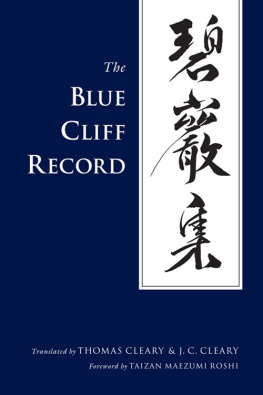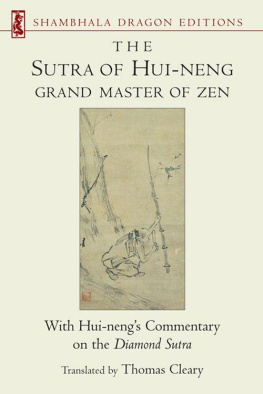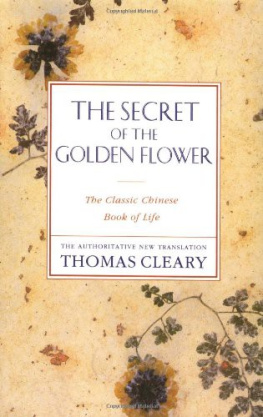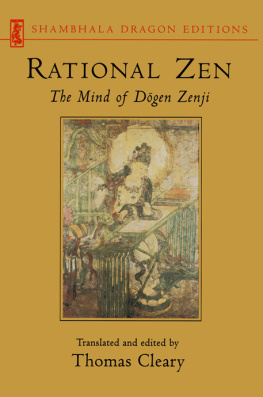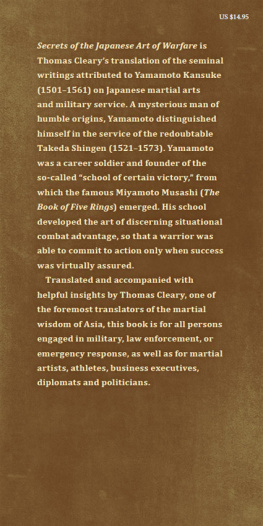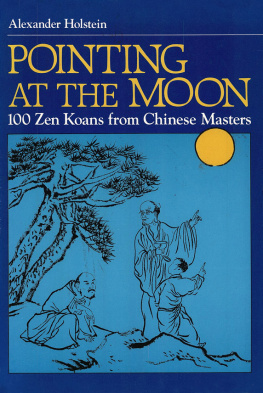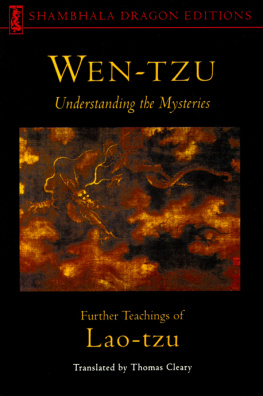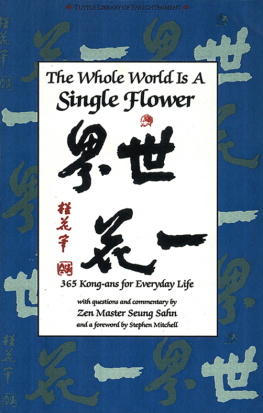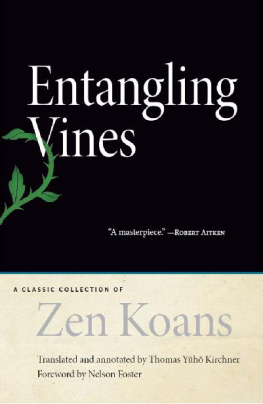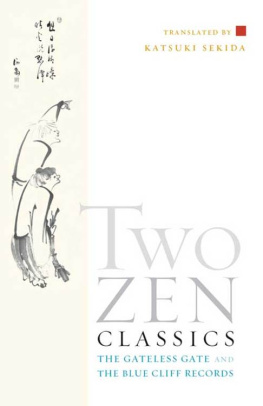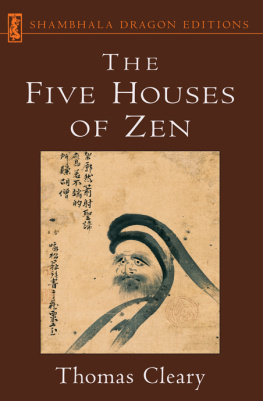The cases comprising [this volume] are meticulously yet gracefully rendered, and should make this classic welcome to both scholars and Zen students, and even casual readers. A nice addition is the inclusion of biographical information about the Chinese masters.
Library Journal
The Blue Cliff Record reveals to us what enlightenment is, what the enlightened life is, how the patriarchs and masters of old struggled with it, attained it, actualized it, and accomplished it.... I firmly believe this translation is a milestone and will immensely benefit those who are sincerely engaged in the practice and the enlightenment of the Buddha-way.
from the foreword by Taizan Maezumi Roshi
ABOUT THE BOOK
The Blue Cliff Record is a translation of the Pi Yen Lu , a collection of one hundred famous Zen koans accompanied by commentaries and verses from the teachings of Chinese Zen masters. Compiled in the twelfth century, it is considered one of the great treasures of Zen literature and an essential study manual for students of Zen.
THOMAS CLEARY holds a PhD in East Asian Languages and Civilizations from Harvard University and a JD from the University of California, Berkeley, Boalt Hall School of Law. He is the translator of over fifty volumes of Buddhist, Taoist, Confucian, and Islamic texts from Sanskrit, Chinese, Japanese, Pali, and Arabic.
J. C. CLEARY holds a PhD in East Asian Languages and Civilizations from Harvard University. He has translated several books of Zen literature, including Zen Dawn.
Sign up to learn more about our books and receive special offers from Shambhala Publications.

Or visit us online to sign up at shambhala.com/eshambhala.
The Blue Cliff Record
Translated by Thomas Cleary and J. C. Cleary
Foreword by Taizan Maezumi Roshi

SHAMBHALA
Boston & London
2013
Shambhala Publications, Inc.
Horticultural Hall
300 Massachusetts Avenue
Boston, Massachusetts 02115
www.shambhala.com
1977 by Thomas Cleary and J. C. Cleary
All rights reserved. No part of this book may be reproduced in any form or by any means, electronic or mechanical, including photocopying, recording, or by any information storage and retrieval system, without permission in writing from the publisher.
The Library of Congress catalogues the previous edition of this book as follows:
Yan-wu, 10631135.
[Pi yen lu. English]
The blue cliff record / translated from the Chinese Pi yen lu by Thomas and J. C. Cleary ; foreword by Taizan Maezumi Roshi.
p. cm.
Includes bibliographical references.
eISBN 978-0-8348-2820-9
ISBN 0-87773-622-7 (alk. paper)
ISBN 1-59030-232-X (paperback)
1. KoanEarly works to 1800. I. Cleary, Thomas F., 1949 . II. Cleary, J. C. (Jonathan Christopher). III. Title. IV. Series.
BQ9289.Y8213 1992 91-52522
294.3927dc20 CIP
Contents
The Blue Cliff Record
Boundless wind and moonthe eye within eyes ,
Inexhaustible heaven and earththe light beyond light ,
The willow dark, the flower brightten thousand houses;
Knock at any doortheres one who will respond .
This verse is known as the Preface to The Blue Cliff Record . Although the name of the book is taken from the place where it was written, all heaven and earth is nothing but the mass of this Blue Cliff. The hundred cases selected by Hsueh Tou for The Blue Cliff Record are as ten thousand and eighty-four thousand, which are the numbers of dharmas expounded by Shakyamuni Buddha. The innumerable dharmas revealed by him are to be found in each case of The Blue Cliff Record .
There are numerous ways to read a book: skimming, memorizing, careful study, quiet reading, reading aloud, reading with the body, reading with the mind, and reality-reading. It is this last kind of reading which The Blue Cliff Record requires. In this mode, you yourself become the case, and in so doing, the Blue Cliff of ancient China stands revealed as your very life, right here in this time and place.
Since the translators have already ably discussed the form and compilation of the book in their introduction, it is unnecessary for me to cover the same ground. But I should like to mention one thing: that the first person to introduce this text to Japan was Kigen Dgen Zenji, founder of the Soto School of Japanese Zen. In 1227, at age 26, Dgen Zenji had completed five years of study in China and was preparing for his return to Japan. But shortly before leaving, he discovered a copy of The Blue Cliff Record , and was so impressed that he spent his entire last night in China sitting up and hand-copying it. The hand-copied manuscript, known as the Ichiya Hekigan or One-Night Blue Cliff Record, is now treasured and housed at Daijoji Monastery in Japan.
As mentioned in the Introduction, around 1140 Ta Hui burned the original, published by his teacher Yuan Wu in 1128. The familiar version of the present day is the edition of 1300, based upon remaining handwritten copies and two previously published versions. The manuscript Dgen Zenji brought back to Japan some seventy years earlier was probably based on one of the two previous versions, or on a handwritten copy of the day.
The Blue Cliff Record has become almost uniquely revered among Zen Buddhists as a model koan text, especially noted for its subtlety and profundity in both form and content. Interestingly enough, another koan collection, the Book of Equanimity (J.: Shy Roku ) parallels it in form and level of sophistication. Unlike The Blue Cliff Record , which was compiled and refined by masters of the Rinzai and Ummon Schools, the Book of Equanimity is a product of the Soto lineage, and is primarily associated with that school. Nonetheless, The Blue Cliff Record appears to have been widely appreciated by Soto masters, although the Book of Equanimity failed to gain much prominence among teachers of the Rinzai School.
It is noteworthy that Dgen Zenji selected twenty-four cases from The Blue Cliff Record , nearly a fourth of the total number of cases, for inclusion in his own three-hundred-case collection of koans entitled the Shinji Shbgenz ( The Shbgenz in Chinese ). This is not to be confused with the Kaji Shbgenz ( The Shbgenz in Japanese ), which most modern readers think of when they mention the Shbgenz . This latter work is heavily based upon koan interpretations and commentaries by Dgen Zenji.
We mention this because of an unfortunately widespread impression nowadays that Dgen Zenji and the Soto School represent a non-koan or even anti-koan orientation within Zen. In fact, nothing could be further from the truth. Like Ta Hui of the Lin Chi School, Dgen Zenji was critical of the abuses of koan study common in his day. These abuses, which essentially involved a stereotyped and overly intellectual use of koans, led Dgen Zenji to express his concern lest the clarity and vigor of Zen students fall into deeper decline. Similarly, Ta Huis burning of The Blue Cliff Record was an expression of his concern over the misuse of koans, rather than any fundamental objection to the use of koans, verses, or commentaries as such. Avoiding sectarian prejudice, misunderstanding, or biased views of koans, I sincerely wish that The Blue Cliff Record , one of the most wonderful dharma-treasures of the worlds Eastern heritage, will at last be fully appreciated by, and benefit, its Western readers.
This tremendous work of translating The Blue Cliff Record has not previously been done by American scholars and is to be highly appreciated and praised. Western Zen Buddhists have waited a long time for a competent translation of this major text; they need wait no longer.
Next page
